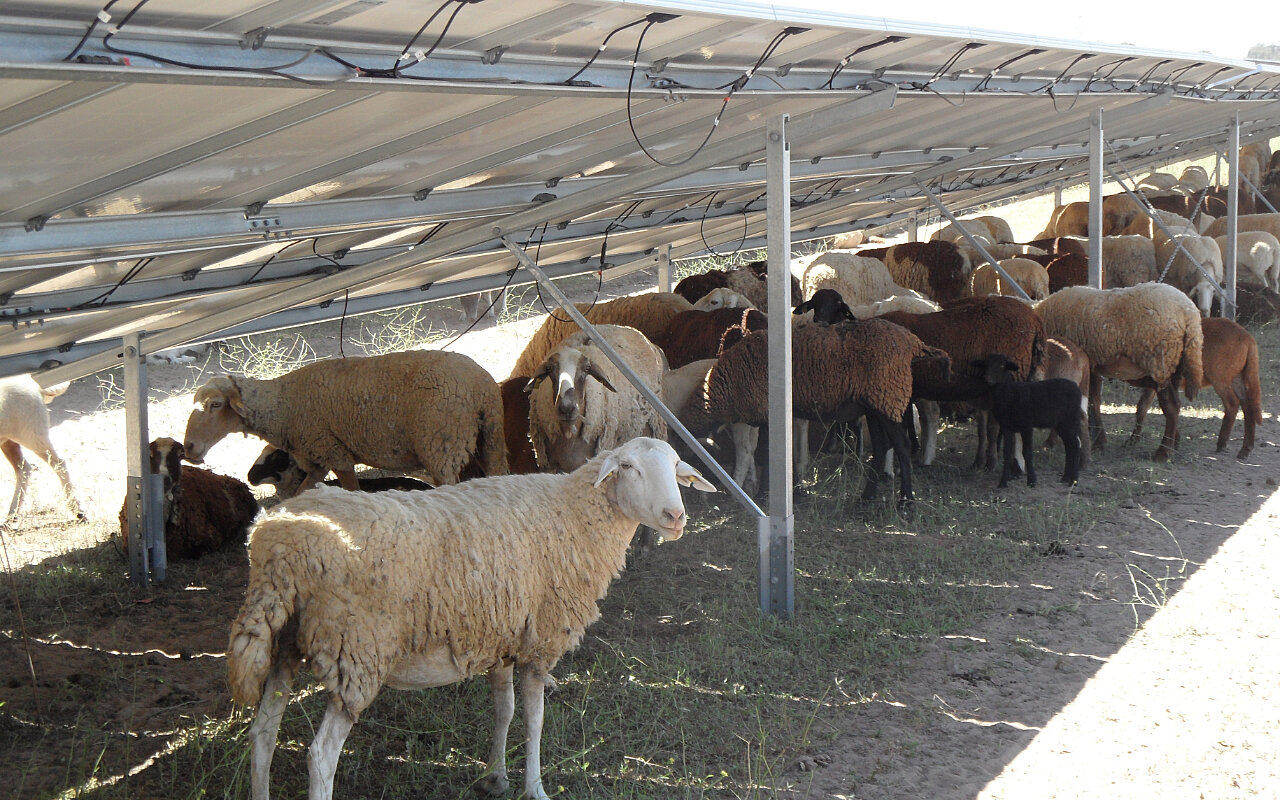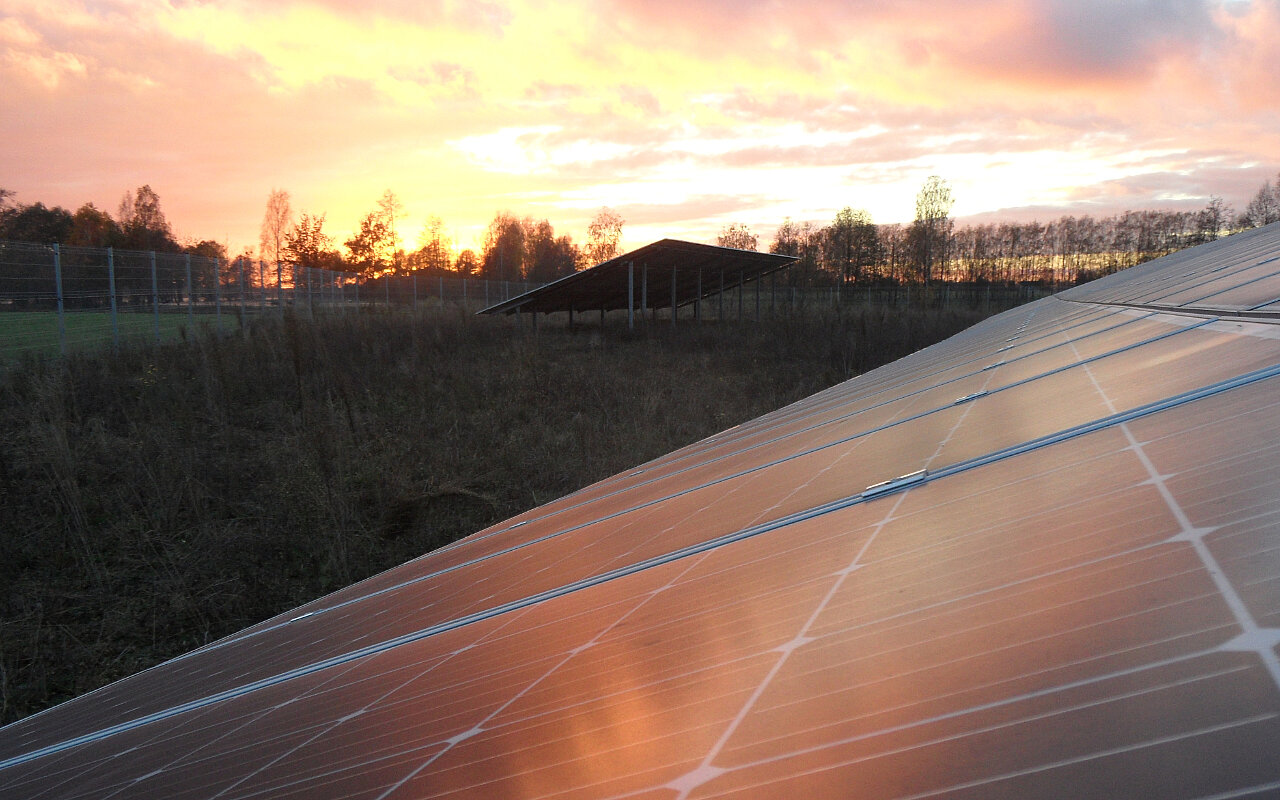Wiring, inverters - and a flock of sheep

A closer look to what actually happens during the Inspection of your PV plant
We all know first-hand, that it takes quite some time from the first project idea to the final realization. Referring to the process of installing a PV plant, the last step after the PV system feeds into the grid would be the acceptance from the investor to the EPC. By this point of the timeline at the latest it is recommendable to consult an independent third-party expert to examine the construction and to uncover any deficiencies that should be remedied before the acceptance. Depending on the desired scope of the examination, it will compromise varied detailed processes, but the basics of any inspection include a visual check of all plant components.
So, let me take you through the steps of a technical inspection. It may seem a complicated and intertwined process at first, but with an experienced partner like meteocontrol on your side, the inspection will be like a relaxed walk in the park.
First, have a look at this checklist to get a rough overview on what to expect:
- Mounting system / substructure
- Potential equalization
- Modules
- Wiring of the modules
- Cabling of the string lines
- String junction boxes / generator junction boxes (if present)
- Inverter
- Transformer stations and transfer stations
- Monitoring system
- Safety system
- General condition of the plant and premises
In general, the aim of each inspection is to secure the quality and to ensure that the site is up-to-date concerning the technical equipment, norms and statutory requirements. Let’s get started by looking through each checkpoint from the big picture to the smallest details:
The site in the spotlight
First of all, it is necessary to determine whether the vegetation in front of the module rows has already reached a critical height, which would lead to additional losses due to shading or whether the terrain has been properly prepared in terms of maintenance, for example removing large stones or straightening ruts that occurred during the construction phase. In this context the plant documentation is of utmost importance as it serves as a basis for the visual inspection, but is also crucial for the operating phase and thus needs to be correspondingly detailed.
Optics matter
Even though we are dealing with a shiny new PV plant, it should not be neglected to determine whether parts of the substructure have been damaged or bent – or even show signs of corrosion already. The modules will be checked closely for proper clamping, hence if there are any loose clamps and if the distance specified by the manufacturer has been kept to the requirements. From an early age we are told “optics matter”, that also counts for the PV modules. For this reason, the overall appearance is scanned for visually conspicuous cells or broken glass. Already looking so closely at the modules, the inspector may occasionally measure angles of inclination and shading, too.
Wiring, inverters – and a flock of sheep
To (literally) keep everything connected, wiring is essential. Especially if your site accommodates some furry guests like sheep, it is necessary to tie the wires up to avoid them being ripped down or mistaken for grass. It is also advisable to route the cables in a way that sharp edges are avoided and UV protection is installed. The inverters are checked with regard to assembly, connections and possible error messages. The same applies to the other components as well, of course. In general, it is imperative to properly label rows, strings, inverters and station – it will make your life a lot easier.
Electricity is in the air
The inspector also has the possibility to check the string parameters at random, which include open-circuit voltage, short-circuit current and isolation resistance. In this case, it is however only recommended to conduct a sample, as the test has to be carried out and documented by the system installer for all strings before or in the course of commissioning the system. Therefore, this part of the inspection is primarily a matter of making sure that the existing measurement records are plausible.
You’ve got the power?
Let’s now have a closer look at the actual performance of the modules and whether it corresponds to the manufacturer’s specifications. Now, for this there are two possibilities: the first carries the performance measurements out under standard test conditions (STC) in an independent test laboratory, but for this the modules have to be dismantled and shipped to the laboratory. The second option consists of measurements directly in the field, which has the advantage that a larger sample can be taken, as the modules don’t have to be removed from the site in the first place. Anyhow, it would be possible to combine the two methods in measuring reference modules in the laboratory and taking a larger sample in the field.

As far as the eye can see – and even further
In addition to the visual inspection, there are other tests that allow a more detailed statement about the systems and component quality. The most common of those is conducted by the aid of a thermographic camera. A drone allows to identify performance reducing faults such as defective cell strings in modules, thermal anomalies such as hot cells, warm junction boxes or even entire strings and system areas that are not operating. Luckily, the drone doesn’t have to do the entire job by itself, but can be supported by thermography on the ground. Here however the focus is not especially on the modules, but on components such as the electrical connections of plugs or at the end of strings, on inverters and in the transformer stations – in other words, it is a type of electrical thermography.
We compare because we care
Depending on the exact design of the construction and the EPC contract (Engineering, Procurement, Construction), a performance assessment may also be necessary. For this, data on irradiation and production, for example, are recorded on site and used to determine the actual performance ratio (PR) of the plant. This ration thereupon must be compared with the agreed PR in the contract or the PR calculated in the yield report in order to make sure that the plant is producing according to expectations.
The final steps
The results of the entire inspection will, of course, be documented by the expert and summarized in a report after completing the work. The investor or owner receives then this detailed report including a defect protocol with recommended follow-up actions, as well as a photo protocol and a list of measurement results. Thanks to these documents, the investor or owner is then in a position to grant acceptance in good conscience or to insist on a prior rectification of defects.
In the end it is also worth mentioning that the final acceptance only takes place at the end of the warranty period, thus up to this point, the system installer is responsible for rectifying any defects. Therefore, it is highly recommended to carry out another inspection of the system before the end of this period.
Hopefully, this outline of a technical inspection gave you the possibility to form a clearer idea of what to expect in the final steps before your PV plant is ready to be up and running. Don’t worry if you feel like you won’t be able to remember every single part of the examination, meteocontrol will make sure with our technical inspection that the onset of your plant will go as smoothly as possible.
For more information or if you have any questions, feel free to get in touch with us:
Dipl.-Ing. Univ. Matthias Hadamscheck
Head of Technical Consulting
Phone: +49 821 34 666 74
E-mail: m.hadamscheck@meteocontrol.de
Christopher Meyer-Friedrich
Business Development Manager Consulting & Prognoses
Phone: +49 821 34 666 67
E-mail: c.meyer-friedrich@meteocontrol.de